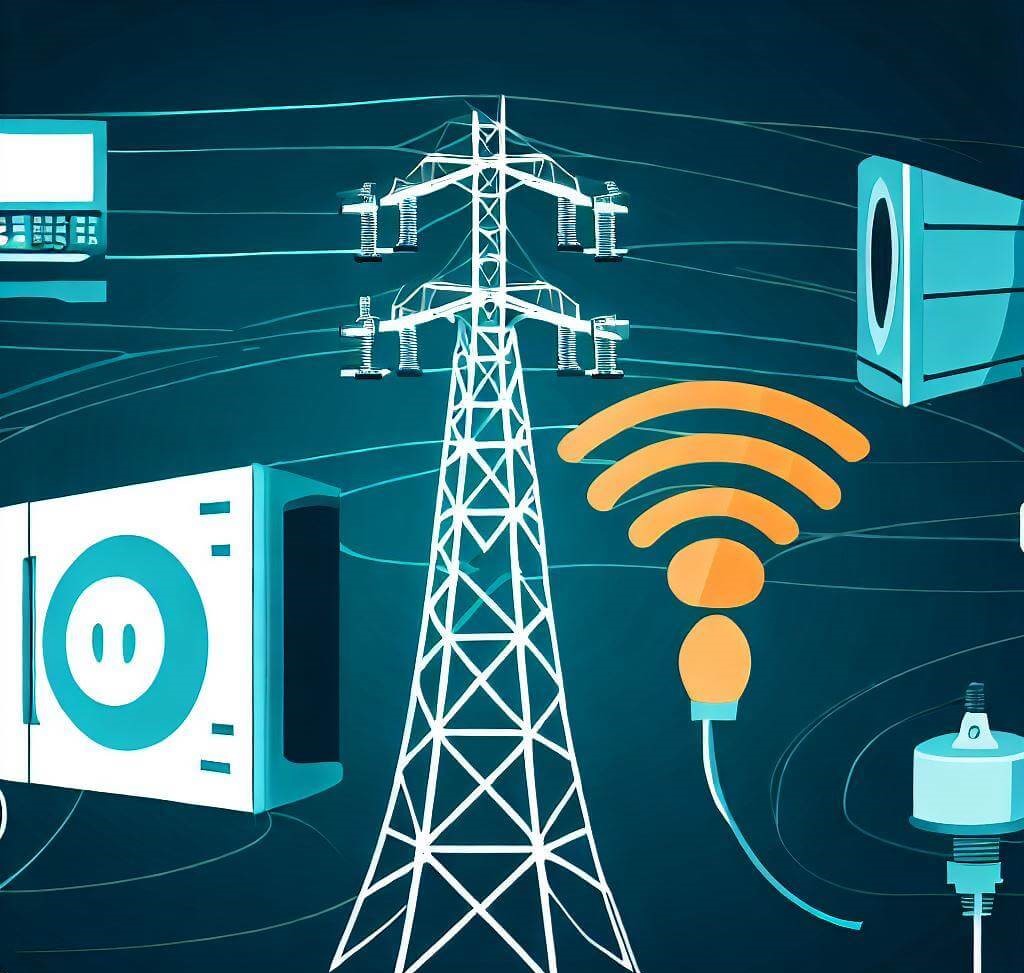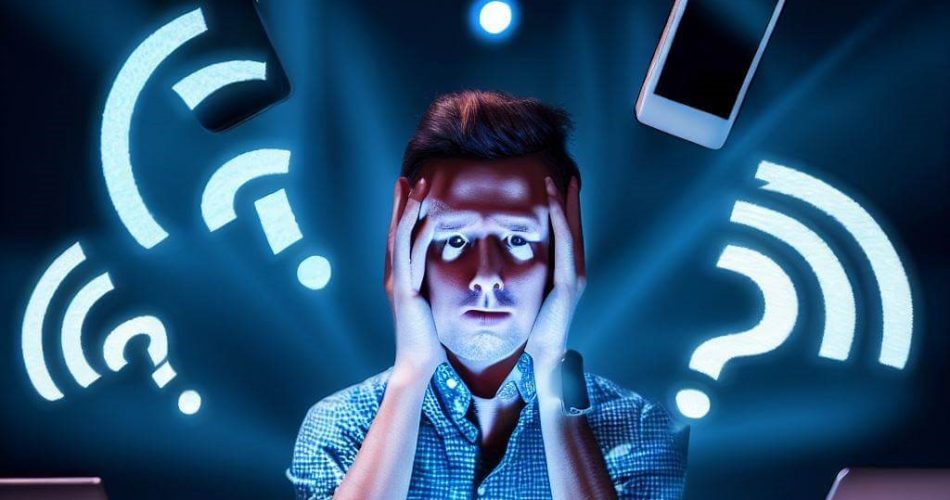Introduction
Brief Overview of EMF
Electromagnetic Fields (EMFs) are ubiquitous in our modern world. From Wi-Fi signals to your cell phone’s radiation, EMFs are almost impossible to avoid.
Importance of Recognizing EMF Exposure Symptoms
Recognizing the symptoms of EMF exposure is not just a matter of curiosity; it can be a significant health imperative. As we increasingly surround ourselves with electronic gadgets and live in environments flooded with various forms of electromagnetic fields, the risk of experiencing adverse health effects due to EMF exposure rises. Ignorance in this area is not bliss; it could potentially be harmful or even dangerous.

Why It Matters
- Early Intervention: Identifying symptoms early on allows for prompt action, which can include anything from re-evaluating your usage of electronic devices to consulting healthcare professionals for proper diagnosis and treatment. Early intervention can often prevent symptoms from escalating into more severe health issues.
- Quality of Life: Constant exposure to EMFs, if harmful, can severely impact your quality of life. Symptoms like fatigue, headaches, and sleep disturbances can interfere with your daily activities and overall well-being.
- Informed Decisions: Knowing the symptoms and understanding the risks allows you to make more informed decisions. For instance, you might choose to invest in EMF shielding devices or rearrange your living space to minimize exposure.
Long-Term Implications
Not recognizing symptoms could mean prolonged exposure, which some studies suggest may have long-term health implications. These can range from chronic fatigue to more severe conditions like increased risk of certain types of cancers, according to some research (although it’s essential to note that the scientific community has not reached a consensus on this).
Public Health Concerns
As the number of EMF-emitting devices continues to grow, so too does public exposure to these fields. The potential for widespread health impacts makes it even more crucial to recognize and understand EMF exposure symptoms. This isn’t just an individual concern but a broader public health issue.
Personal Empowerment
Finally, being aware of EMF exposure symptoms is empowering. It puts you in a position to take control of your health proactively. Whether it’s reducing screen time, using hands-free options for mobile communications, or taking breaks away from electronic devices, every little action can contribute to a healthier lifestyle.
What is EMF?
Definition
EMF stands for Electromagnetic Fields. These are invisible areas of energy, often referred to as radiation, that are associated with the use of electrical power and various forms of natural and man-made lighting.
Sources of EMF
EMFs emanate from a variety of sources, including:
- Electrical appliances
- Mobile phones
- Wi-Fi routers
- Power lines
Types of EMF Exposure
Non-Ionizing Radiation
This is the less harmful form of EMF and is emitted from sources like microwaves and computer screens.
Ionizing Radiation
This is the more dangerous form of EMF, emitted from X-rays and radioactive materials.
Common EMF Exposure Symptoms: A Comprehensive Look

Understanding the symptoms associated with EMF exposure can be challenging, given the range of signs and the fact that many of these symptoms are common to other conditions. However, as our world becomes increasingly digital, it’s essential to be vigilant about the potential effects of EMF exposure on our health.
Physical Symptoms
- Fatigue and Weakness: One of the most frequently reported symptoms is a sense of fatigue or weakness, even after a full night’s sleep. According to a survey published in the International Journal of Environmental Research and Public Health, approximately 30% of respondents experiencing EMF sensitivity reported fatigue as a primary symptom.
- Headaches and Migraines: EMF exposure has been linked to headaches and migraines. A study in the Journal of Headache and Pain reported that around 20% of participants exposed to EMF sources experienced headaches.
- Sleep Disturbances: Issues like insomnia and restless sleep have been associated with EMF exposure. The Bioelectromagnetics Journal published research indicating that EMF can affect melatonin levels, a hormone responsible for regulating sleep.
- Muscle and Joint Pain: Some individuals report muscle cramps, joint pain, or a tingling sensation. Though not conclusively proven, these symptoms are increasingly being studied for their potential link to EMF exposure.
- Skin Irritations: Symptoms like redness, burning sensations, and rashes have also been reported. However, it’s essential to note that these symptoms are also common to various other conditions.
- Digestive Issues: Nausea, indigestion, or loss of appetite are less commonly mentioned but are a concern for those suspecting they have EMF sensitivity.
- Respiratory Problems: Though rare, some individuals have reported difficulty in breathing or increased asthma symptoms when in close proximity to high EMF sources.
Psychological Symptoms
- Anxiety and Stress: Constant exposure to EMF-emitting devices, like smartphones and laptops, has been studied for potential links to increased anxiety and stress levels.
- Depression: A study in Environmental Health Perspectives suggested that long-term exposure to high levels of EMF could potentially contribute to depression.
- Irritability and Mood Swings: These are often reported but are also symptoms commonly associated with other conditions, making them hard to definitively link to EMF exposure.
- Cognitive Decline: Some research indicates that long-term EMF exposure may be linked to issues with memory and concentration, although the evidence is not yet conclusive.
Other Symptoms
- Hearing Issues: A buzzing or humming sound, often termed “tinnitus,” has been reported by some individuals.
- Visual Disturbances: Problems like poor vision and eye strain have also been described, particularly in those who spend significant time in front of screens.
Considerations and Disclaimers
It’s crucial to understand that while these symptoms are reported by individuals who believe they are sensitive to EMF, the scientific community is still debating the causal link between EMF exposure and these symptoms. Symptoms can often be subjective and may be influenced by other health conditions, making it essential to consult healthcare professionals for a comprehensive diagnosis.
How to Diagnose EMF Exposure Symptoms
Diagnosing EMF exposure symptoms can be a complicated process, primarily because many of these symptoms overlap with other medical conditions. However, if you suspect that you’re experiencing health issues due to EMF exposure, here are some approaches to consider.

Medical Tests
- Blood Tests: A complete blood count can sometimes reveal abnormalities that might be related to EMF exposure, although it is not a definitive test.
- MRI Scans: While not directly diagnosing EMF exposure, MRI scans can help rule out other conditions that may be causing similar symptoms.
- Consultation with Specialists: Depending on your symptoms, you may need to consult with neurologists, or other specialists for a thorough examination.
- Electrodermal Testing: Some clinics offer electrodermal testing to measure electrical resistance on the skin’s surface. They claim can indicate EMF sensitivity.
Self-Assessment
- EMF Meters: These handheld devices can measure the level of EMF radiation in your environment. While not a diagnosis, high readings can prompt further investigation.
- Symptom Journal: Keeping a detailed log of when symptoms occur, the activities you’re engaging in, and the devices you’re near can help identify patterns.
- Elimination Method: Temporarily removing suspected EMF sources from your environment and observing any changes in symptoms can also be revealing.
Additional Diagnostic Tools
- Questionnaires: Some healthcare providers may offer questionnaires that assess your likelihood of being sensitive to EMF based on your symptoms and exposure history.
- Environmental Assessments: An environmental assessment of your home or workplace may be recommended to identify potential sources of EMF exposure.
It’s crucial to consult healthcare providers for a comprehensive diagnosis. Self-assessment tools should not replace professional medical advice.
The Science Behind EMF Exposure Symptoms
Understanding the science behind EMF exposure symptoms can be complex due to the contradictory findings.
Current Research
- Inconclusive Evidence: Many studies have investigated the health impacts of EMF exposure, but the results remain inconclusive. Some research suggests potential links to health issues, while other studies find no significant effects.
- Biological Mechanisms: The primary challenge in EMF research is identifying the biological mechanisms that could cause symptoms. While some animal studies have shown cellular changes due to EMF exposure, translating these findings to human health is not straightforward.
- Long-Term Studies: Longitudinal studies are being conducted to understand the long-term health impacts of EMF exposure. These studies aim to provide more definitive answers but will take time to complete.

Expert Opinions
- Precautionary Principle: Many experts recommend adopting a precautionary approach. Given the inconclusive evidence, it’s advised to minimize exposure where possible.
- WHO Guidelines: The World Health Organization has published guidelines on EMF exposure but states that more research is needed to understand the health impacts fully.
- Professional Organizations: Groups like the International Commission on Non-Ionizing Radiation Protection (ICNIRP) also provide guidelines, but these are often subject to debate within the scientific community.
Controversies and Debates
- Public Perception vs. Scientific Consensus: There is often a disconnect between public perception and scientific consensus on EMF exposure. While many people believe that EMF is harmful, the scientific evidence remains inconclusive.
- Industry Influence: Some critics argue that studies funded by industries that benefit from EMF-emitting technologies may be biased. However, many independent studies are also being conducted to address this issue.
Protection Against EMF Exposure
In an age where electromagnetic fields (EMFs) are nearly everywhere, it’s important to consider various ways to protect against potential EMF exposure. Here are some methods that are commonly suggested:
EMF Shielding Devices
- Shielding Fabrics: Special fabrics are available that can be used for curtains or even clothing, which claim to block out EMFs.
- Phone Cases: EMF-protective phone cases are designed to reduce the radiation emitted by cell phones.
- Shielding Paint: Some companies offer EMF shielding paint that can be applied to walls for added protection.
Lifestyle Changes
- Distance: The intensity of EMF radiation decreases significantly with distance. Keeping devices like Wi-Fi routers and cell phones at a distance when not in use can reduce exposure.
- Time: Reducing the amount of time you spend near high-EMF devices can also lower your exposure.
- Airplane Mode: When not using your smartphone for calls or internet, switching it to airplane mode can minimize EMF radiation.
- Hardwire Over Wi-Fi: Opt for wired connections over wireless whenever possible. This can reduce Wi-Fi radiation exposure.
- Natural Barriers: Plants and certain minerals like shungite are believed by some to absorb or neutralize EMFs, although scientific evidence to support this is lacking.
Environmental Changes
- EMF Assessment: Professional assessments of your living or working space can identify high-EMF areas that you should avoid.
- Home Layout: Rearranging furniture so that sitting or sleeping areas are distanced from high-EMF sources can also be beneficial.
Pros and Cons of EMF Protection Measures
While protection methods sound promising, it’s crucial to weigh the pros and cons.
Pros
- Reduced Health Risks: Taking precautionary measures may reduce the potential risk of health problems related to EMF exposure.
- Peace of Mind: Knowing you’re actively minimizing exposure can offer a sense of security and mental ease.
- Improved Well-being: Some people report feeling physically better after taking EMF protection steps, although individual experiences vary.
- Proactive Approach: Even if the science isn’t conclusive, a proactive approach can often be better than a reactive one, especially when potential health risks are involved.
Cons
- High Costs: EMF shielding devices and professional assessments can be expensive, making them inaccessible for some people.
- Inconvenience: Lifestyle changes, like rearranging home layouts or reducing device usage, can be inconvenient.
- Lack of Scientific Consensus: The effectiveness of many EMF protection products is still under debate, and not all products may deliver on their promises.
- False Sense of Security: Relying solely on protection measures without understanding your specific EMF exposure can lead to a false sense of security.
- Opportunity for Scams: The growing concern around EMF exposure has led to a market flooded with products that claim to offer protection but may not be scientifically validated.
In Summary: Be EMF-Savvy
Navigating the complexities of EMF exposure can feel overwhelming, but being informed is the first step towards taking control of your health. This article has covered the gamut—from understanding what EMF is and identifying its common exposure symptoms to the science behind these symptoms and ways to protect yourself. While the scientific community is still conducting research to reach more definitive conclusions, the precautionary principle applies: it’s better to be safe than sorry.
Being “EMF-savvy” means you’re not just passively absorbing information but actively engaging with it to make informed decisions. It involves a multi-faceted approach, from staying updated with the latest research and expert opinions. Consider consulting healthcare providers for tailored advice and remain proactive in minimizing potential risks.
Remember, while EMF exposure is a concern, it doesn’t have to be a crisis. With the right knowledge and precautions, you can live a balanced life in our increasingly digital world.
FAQs
- What are the most effective ways to reduce EMF exposure?
Keeping a distance from EMF sources, reducing the time spent near high-EMF devices, and using shielding devices are considered effective ways. However, consult healthcare providers for personalized advice. - Is it possible to live a life completely free from EMF exposure?
Given the ubiquity of EMF-emitting devices and infrastructure, it’s virtually impossible to completely avoid EMF exposure. However, you can take steps to minimize it. - Can children be more susceptible to EMF exposure?
Some studies suggest that children could be more vulnerable due to their developing bodies and thinner skulls. However, research is ongoing, and it’s best to consult a pediatrician for advice tailored to your child. - How reliable are EMF meters for home use?
While EMF meters can provide a general idea of the EMF levels in an environment, they should not replace professional assessments or medical advice. - Do all EMF shielding products work as advertised?
The effectiveness of EMF shielding products is a subject of debate. While some may offer a degree of protection, it’s essential to research and consult experts before making a purchase.

